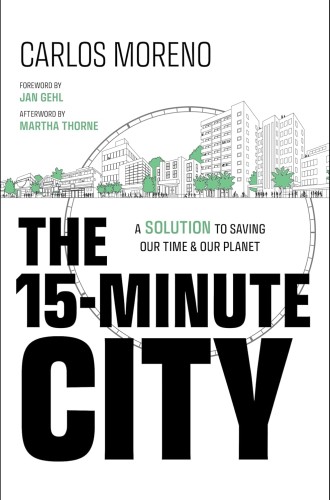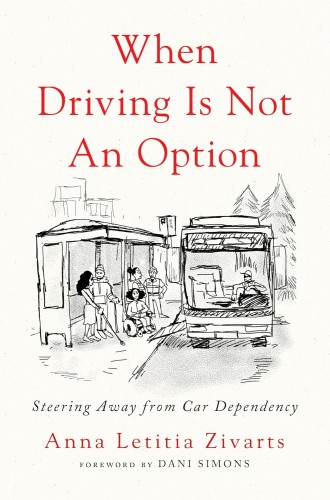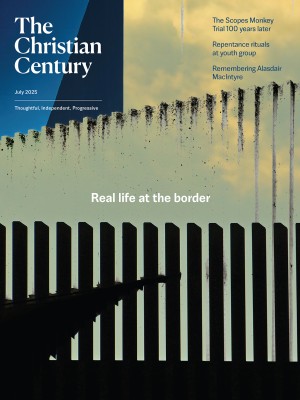Can we live without cars?
A pair of new books can challenge Christians to see transportation as an expression of the beloved community.

The 15-Minute City
A Solution to Saving Our Time and Our Planet

When Driving Is Not an Option
Steering Away from Car Dependency
Last summer, as I joined millions of viewers each day in watching the Olympics, I noticed that the commentators frequently mentioned Paris’s push to become a 15-minute city. The concept is quite simple: All of life’s necessities can be found within a 15-minute walk, bike ride, or public transit ride from each person’s residence.
Carlos Moreno, who grew up in rural Colombia and now teaches at IAE Paris Sorbonne Business School, coined the term “15-minute city” (ville du quart d’heure) at the 2015 United Nations Climate Change Conference, and he has championed it ever since. I submit his new book on the concept as required reading for anyone interested in the flourishing possibility of churches and urban transformation. After all, what is a 15-minute city other than the ancient Christian concept of a parish? Or even the ancient Jewish tradition of a “sabbath day’s journey”?
Read our latest issue or browse back issues.
Moreno’s genius is not in showing how the trinity of concrete, cars, and oil has ruined the planet but in showing how this trinity has ruined our concept of time. Concrete, cars, and oil have funded an urban life cycle in which we do not work near where we live, we do not know our neighbors, and we are driven by a frenetic pace of life. As Moreno puts it,
We have gradually lost a sense of proximity and connection with our immediate environment. The constraints of everyday life, demands of work, and social pressures mean that we are constantly on the move, moving away from where we live, and losing the vital link with our local community. This has a detrimental effect on well-being, personal development, and our sense of belonging.
Moreno’s proposal for solving these problems is for cities to be intentional about promoting living in proximity to work, leisure, and commercial activities. When distances are reduced, community increases.
Many will balk and say, “This is a great concept, but it is impractical.” To combat this retort, Moreno devotes the second half of his book to providing global examples of how concepts of the 15-minute city are being implemented, from Paris to Portland to Buenos Aires to Busan. The example of Paris looms large throughout the book, as it should: Paris has already been transformed. By last spring, after a few years of converting roads to bikeways, more Parisians were riding bikes for transportation than driving cars. Moreno also takes readers into other cities, revealing how human-made problems can be remade and repurposed. Freeways can be removed (or capped), streets can be repurposed to serve pedestrians and bicyclists in addition to automobiles, parking spots can be repurposed into parklets and extended outdoor spaces for restaurants, remote work can allow for greater flexibility and less commuting.
Moreno aims to expand readers’ imaginations, moving us from the resigned framework of “we’ll always have Paris” to something more like “it’s a beautiful day in the neighborhood.” His book is quite timely, because in 2028, the Summer Olympic Games will be in Los Angeles—which has pledged to make the games a car-free event.
That pledge should be a welcome announcement to Anna Zivarts, author of When Driving Is Not an Option. Zivarts is a mom with low vision (she was born with the neurological condition nystagmus), a disability activist, and a nondriver. Her book pulls the chair out from under the assumption that everyone in the United States drives a car. In fact, she points out, at least one-third of all Americans do not drive: children under 16, many new immigrants, people with suspended licenses, some senior citizens, some people with disabilities, folks who choose not to drive, and those who cannot afford to. From there, Zivarts reveals where nondrivers are, highlights their difficulties, and proposes solutions.
Although I consider myself a transit activist, Zivarts’s book made me feel like a beginner all over again. It is an invitation to drivers to be in solidarity with nondrivers, to imagine being in their places for a moment, and to make decisions with them in mind. When transit decisions are made with nondrivers in mind, Zivarts shows, everyone wins. All of society benefits from better and wider sidewalks, protected bike lanes, longer crossing times at intersections, slower city speed limits, and reliable, frequent, understandable public transit systems.
As I read this book, I kept asking myself: What is the one unspoken requirement for church membership? Driving. Church life is almost always dependent on car ownership, or at least being able to operate a car. What if church life was planned instead around the one-third of people who are nondrivers rather than the two-thirds who are? What if at least one nondriver was asked to be a part of every church board or governing body? What if, before every church decision, the question was asked, “How will this impact the nondrivers in our community?”
Most Christians probably don’t spend much of their time thinking about sidewalks, bike lanes, and public transportation as expressions of the beloved community. But that’s precisely what they are. Both Moreno and Zivarts invite people of faith to bend the arc of their moral neighborhood toward justice through advocacy. We are not powerless in the realm of transit and urban planning. Almost every local municipality has open seats for citizens to sit on planning commissions, every public works project has open commenting periods, nearly every elected official has forums for citizens to address them, and everyone in the public sector has a way to communicate with them through email, text, phone, or in person.
For churches, the implications of the 15-minute city and the needs of nondrivers are enormous. When we attend to the visions laid out by Moreno and Zivarts, we can help create possibilities of flourishing life for all who live within our parishes.





